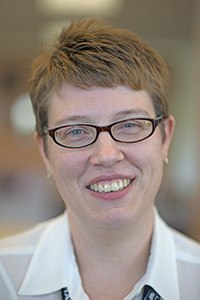How do you tell a middle school student who struggles with equations and is well behind academic standards that he has to give up his favorite course to take another math class?
That’s the question educators like Cynthia Higgins are trying to answer.
The Mill Creek Middle School instructional coach works with teachers to find ways to solve problems with student achievement. One such challenge is working with the changes to federally-mandated individual educational programs (IEP), better known as special education.
The federal government has been moving students away from IEP programs, realizing students weren’t catching up and discovering those classes were taking away from electives and courses students excel at.
“So we’re going to take your elective away, which may be something you come to school for, and we’re going to double-dose you in something you’ve always struggled with,” Higgins said.
By putting kids in two classes of math and English, schools expected to see improvement, but they found just the opposite.
“We’re finding that truancy rates go up, behavior falls apart for kids,” Higgins said. “They already don’t like it, and so suddenly you’re seeing terrible behaviors because kids are in an environment they don’t want to be in double-time.”
According to Higgins, teams at Mill Creek are attempting to resolve that achievement gap by looking at several ways that don’t intrude a student’s schedule.
So far the plan has been to restructure the school’s early periods to provide extra instruction. One way of resolving the gap for struggling students is to provide slightly longer block classes at the beginning of the day. These classes, part of Mill Creek’s Bulldog Academy, are designed to allow students to catch up in their deficient subjects without sacrificing electives, social studies or physical education.
The Bulldog Academy program provides three block courses at the beginning of the day, one social studies and English, one science and one math that are slightly longer than typical classes but not so long that they preclude the students from enrolling in P.E. and an elective. By doing so, students meet all their core, federal requirements but don’t give up that important elective class that keeps them in school.
While this is helpful for students who are slightly behind, educators have yet to find a solution for seriously deficient students. These students wind up in intensive, 110-minute courses that consume four periods of the day. After factoring in social studies and P.E., they find themselves without any time to pursue something they enjoy like music or computer science.
Finding the solution to this, Higgins says, is the million dollar question.
Talk to us
Please share your story tips by emailing editor@kentreporter.com.
To share your opinion for publication, submit a letter through our website https://www.kentreporter.com/submit-letter/. Include your name, address and daytime phone number. (We’ll only publish your name and hometown.) Please keep letters to 300 words or less.

